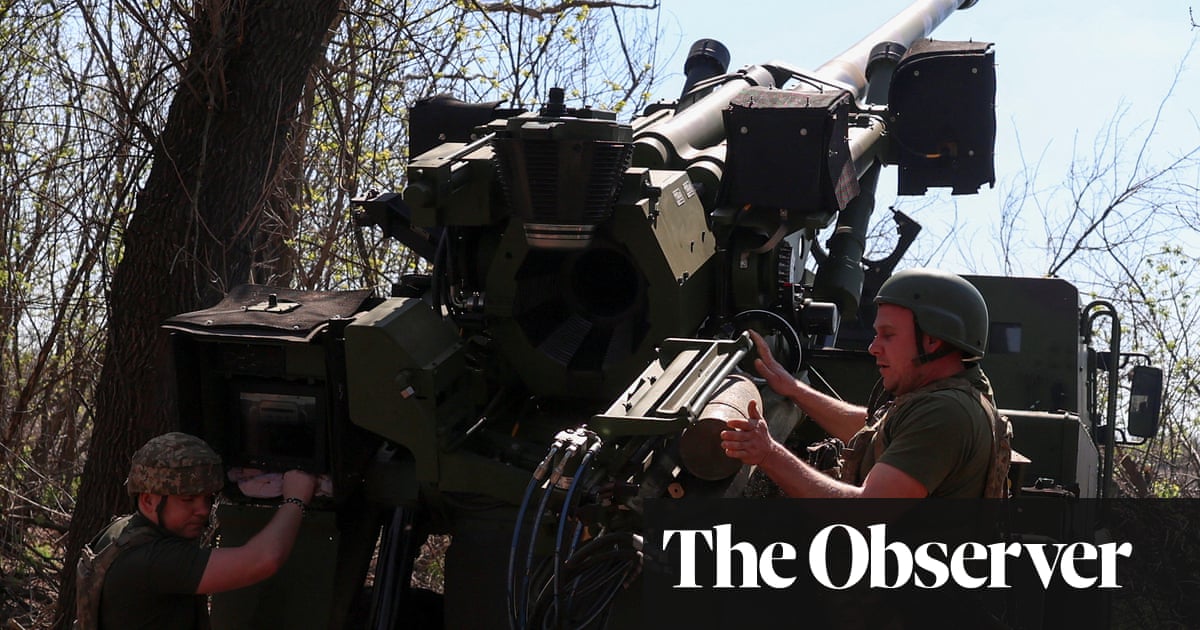Volodymyr Zelenskyy has said Russian artillery fire is continuing inUkrainedespite the Kremlin’s proclamation of an Easter ceasefire.
“As of now, according to the commander-in-chief reports, Russian assault operations continue on several frontline sectors, and Russian artillery fire has not subsided,” the Ukrainian president posted on X. “Therefore, there is no trust in words coming from Moscow.”
He recalled that Russia had last month rejected a US-proposed full 30-day ceasefire and said that if Moscow agreed to “truly engage in a format of full and unconditional silence, Ukraine will act accordingly – mirroring Russia’s actions”.
“If a complete ceasefire truly takes hold, Ukraine proposes extending it beyond the Easter day of April 20,” Zelenskyy wrote.
Earlier,Vladimir Putinannounced an “Easter Truce”, saying that Russian forces would stop combat operations from 6pm Moscow time on Saturday until midnight on Sunday.
In the surprise move, Russia’s president said he was ordering a temporary halt to the fighting out of “humanitarian considerations”. He said he expected Ukraine to follow suit and said this would be a test of whether the “regime” in Kyiv was interested in peace.
Putin made his remarks in a meeting with Russia’s commander-in-chief Valery Gerasimov, which was broadcast on state television. Ukrainians reacted sceptically, pointing out the announcement was made at the same time as an air raid alert sounded across the Kyiv region.
Russia has broken numerous ceasefire since its 2014 covert invasion of eastern Ukraine. Unlike Ukraine, it has refused to implement a 30-day pause in fighting proposed more than a month ago by the Trump administration.
Speaking on Saturday, Putin said Kyiv was guilty of violating a deal “100 times” to refrain from attacking Russian energy infrastructure. He commanded Gerasimov to prepare an “immediate response” if this were to happen again.
“Russia has already declared and violated such ceasefires before,” Anton Gerashchenko, a blogger and former Ukrainian interior ministry adviser, wrote on social media.
It came amid reports that the Trump administration is considering recognising Crimea as a Russian territory as part of its attempt to broker a peace deal between the two sides.
According tosources cited by Bloomberg, the US may be willing to give Putin a strategic victory and to accept Russian control over the peninsula. In 2014, Russian special forces seized Crimea, which Putin annexed after a sham referendum.
US diplomatic recognition would violate the UN charter and the post-1945 consensus that countries cannot seize territory by force. Most states, including the UK, have refused to recognise Russia’s illegal takeover.
The possible concession to Moscow from the White House is likely to provoke criticism from the US’s one-time European allies and a furious backlash in Ukraine. It comes as Donald Trumpsaid on Friday the US may “move on” if no peace deal can be agreed.
“Now if for some reason one of the two parties makes it very difficult, we’re just going to say you’re foolish. You are fools, you horrible people,” Trump declared, adding: “And we’re going to just take a pass. But, hopefully, we won’t have to do that.”
Talks over a settlement are due to continue this week in London. Leaks suggest the US is pushing for a Kremlin-friendly agreement that would see Russia keep occupied areas in the south and east of Ukraine, as well as Crimea.
It is also considering lifting sanctions on Moscow and other “carrots”, theNew York Post reported. By contrast, Trump has heaped pressure on Ukraine, in effect cutting off military assistance and demanding a share of thecountry’s lucrative mineral wealth.
Sign up toHeadlines Europe
A digest of the morning's main headlines from the Europe edition emailed direct to you every week day
after newsletter promotion
Russia’s apparent tactic is to restate its maximalist demands while stepping up its offensive on the battlefield. In talks with Trump’s special envoy, Steve Witkoff, Putin has insisted on Zelenskyy’s removal, Ukraine’s demilitarisation and its “neutral” non-Nato status.
Ukraine appears willing to accept a freeze of the conflict along the existing 1,000km-long (620 miles) frontline. But Zelenskyy has categorically rejected Witkoff’s recent comment that Crimea and four other Ukrainian provinces should be given permanently to Russia.
“I do not see any mandate for him [Witkoff] to speak about Ukrainian territories. These lands belong to our people, to our nation and to the future generations of Ukrainians,” Zelenskyy said last week.
A peace deal will only work if the Russians stop fighting, US officials told Bloomberg. “Negotiations will be fruitless if the Kremlin does not agree to cease hostilities. Providing Ukraine with security guarantees is an integral part of any agreement,” one reportedly acknowledged.
The source said no final decision over Crimea had been made. Since the US ceasefire proposal and ahead of Saturday’s “Easter truce”, Putin has stepped up attacks on Ukrainian civilians and infrastructure.
Two people died on Friday when Russia fired three ballistic missiles into a residential district of Kharkiv, Ukraine’s second city. The attack followed a devastating strike on the city of Sumy on Palm Sunday, in which 35 people were killed, including two children.
Russia has run Crimea for more than 11 years, transforming it from a holiday resort into a major military centre. It was used as a springboard for Putin’s full-scale 2022 invasion. Armoured columns seized large parts of Kherson and Zaporizhzhia provinces, as well as the city of Mariupol.
Ukraine regularly targets Russian army and naval bases in Crimea. It hasbombed the headquarters of Russia’s Black Sea fleetin the port of Sevastopol, using British Storm Shadow missiles. It has also targeted the bridge linking the peninsula to Russiawith dronesanda car bomb.
Separately, Russia and Ukraine both confirmed a swap of prisoners of war on Saturday, mediated by the UAE. Each released 246 prisoners, while a further 31 wounded Ukrainians were transferred in exchange for 15 injured Russian soldiers, the Russian defence ministry said.
